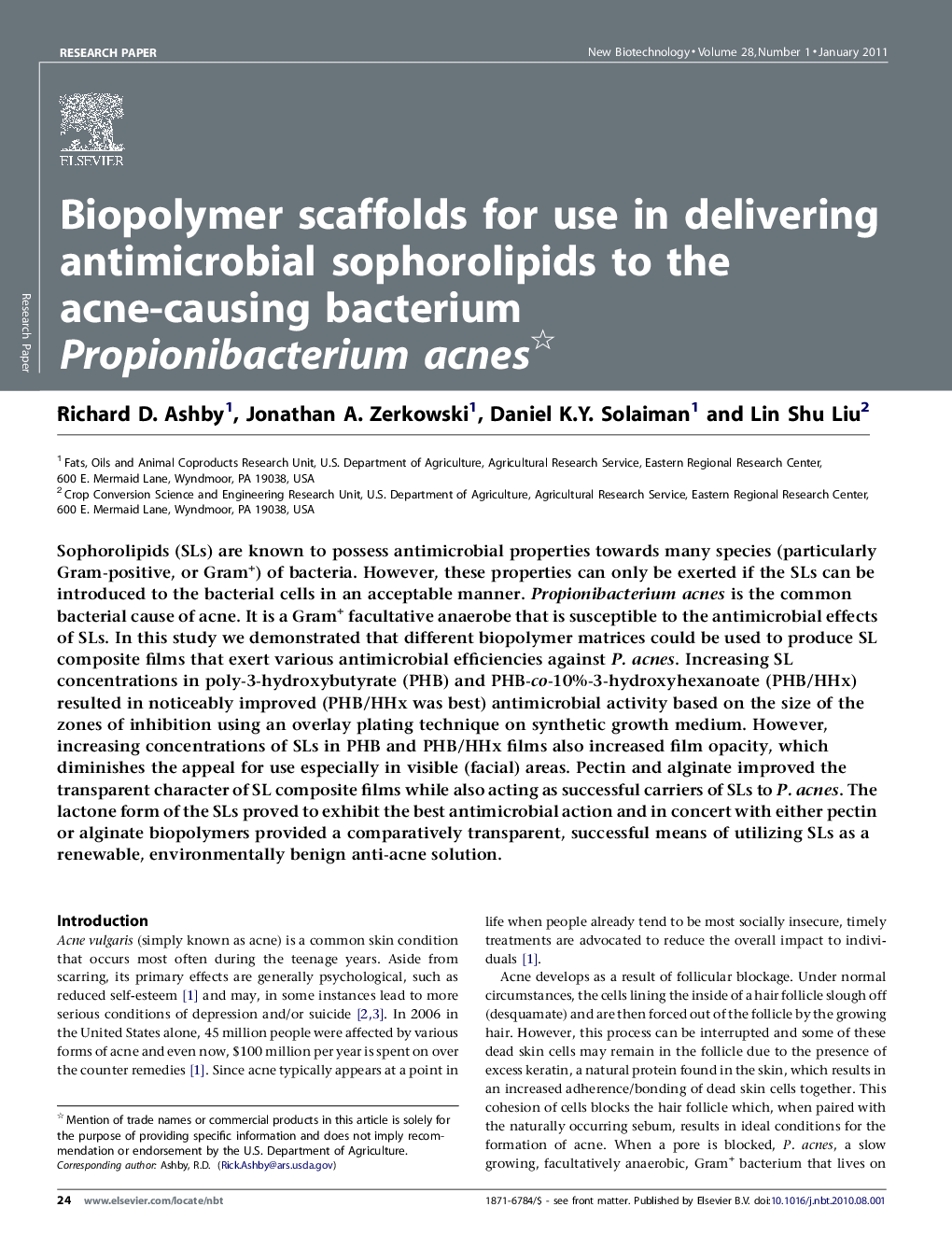| Article ID | Journal | Published Year | Pages | File Type |
|---|---|---|---|---|
| 33886 | New Biotechnology | 2011 | 7 Pages |
Sophorolipids (SLs) are known to possess antimicrobial properties towards many species (particularly Gram-positive, or Gram+) of bacteria. However, these properties can only be exerted if the SLs can be introduced to the bacterial cells in an acceptable manner. Propionibacterium acnes is the common bacterial cause of acne. It is a Gram+ facultative anaerobe that is susceptible to the antimicrobial effects of SLs. In this study we demonstrated that different biopolymer matrices could be used to produce SL composite films that exert various antimicrobial efficiencies against P. acnes. Increasing SL concentrations in poly-3-hydroxybutyrate (PHB) and PHB-co-10%-3-hydroxyhexanoate (PHB/HHx) resulted in noticeably improved (PHB/HHx was best) antimicrobial activity based on the size of the zones of inhibition using an overlay plating technique on synthetic growth medium. However, increasing concentrations of SLs in PHB and PHB/HHx films also increased film opacity, which diminishes the appeal for use especially in visible (facial) areas. Pectin and alginate improved the transparent character of SL composite films while also acting as successful carriers of SLs to P. acnes. The lactone form of the SLs proved to exhibit the best antimicrobial action and in concert with either pectin or alginate biopolymers provided a comparatively transparent, successful means of utilizing SLs as a renewable, environmentally benign anti-acne solution.
